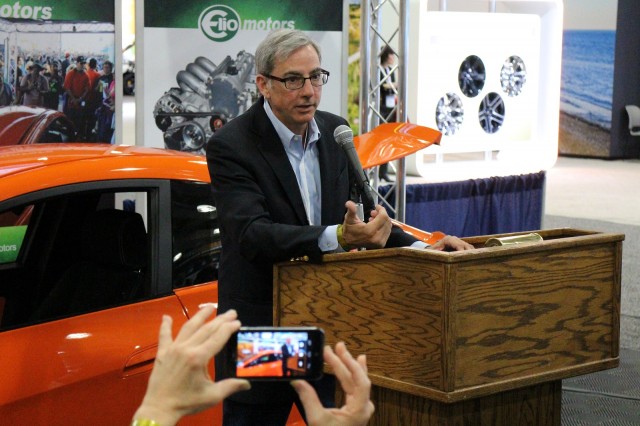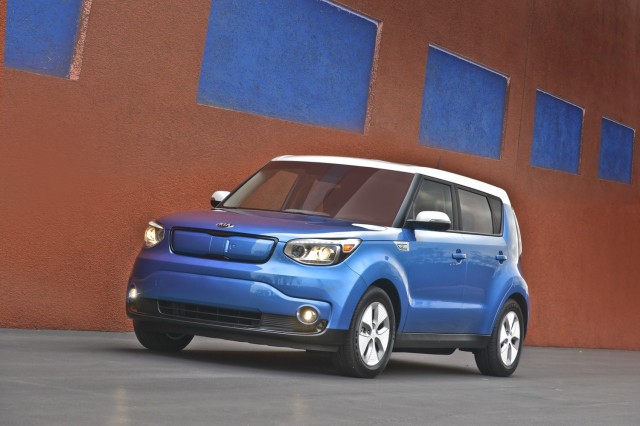Conventional wisdom holds that everything we do means we can’t be doing something else. If you are working, you can’t be at the beach. If you devote your free time to being in a garage band, you can’t climb Mt. Everest. And if you are a global car maker like Honda, you must choose whether your priority is making cars for Europeans, Americans, or Chinese customers.
Is America Still Primary?
For decades, Honda has regarded America as its primary market. The way its cars look, the features they offer, the colors they come in, and how they drive down the road have all been determined by the tastes of American customers. But things are changing and one of those things is profit margins. In the US, Honda’s gross profit per vehicle is abut 4.9%. That’s good, but in China, is profit margin last year was an eye popping 9.6%.
Let’s say you are a senior manager at Honda. Which market is going to get the majority of your attention? “China has a high priority, and I think we will likely put more emphasis on listening to Chinese customer voices going forward,” said Kotaru Shimizu, general manager for sales at Dongfeng Honda Automobile Co., one of Honda’s two joint ventures in China. “The rise of China does throw the conventional wisdom of global resource allocation to the wind,” said James Chao, managing director for the Asia Pacific region at IHS Markit, “especially for global automakers who are only now experiencing the success of the China market and who have traditionally centered their strategic product decisions out of the U.S.”
A Clash Of Cultures
That clash of culture has already played out within Honda. When the company was designing the current Civic — one of the most successful and long running models in automotive history — designers for the Chinese market wanted a traditional three box sedan. American customers prefer a more two box/fastback/hatchback look. Ultimately, the American preference won out but by the time the next generation Civic gets penned, the priorities might be reversed.
Honda sold 1.64 million vehicles in the US last year. 1.34 million of them were manufactured in America. By contrast, it sold 1.26 million vehicles in China last year. But here is the critical difference. The US market for new cars is expected to fall by almost 3% while growth in China is forecast to exceed 24%. Once again, faced with those statistics, which market would you concentrate your energy on if you were guiding a large multinational corporation?
Alcohol Was Involved
China and Japan have not always had the closest of relationships. The
Rape Of Nanking is long in the past but not entirely forgotten. But there is no barrier so high that it cannot be conquered by the application of sufficient quantities of alcohol. Honda CEO Takahiro Hachigo was vice president of overall operations in China for many years, where he was in charge of leading purchasing, production and r&d. From 2013 to 2016 he was in charge of Honda’s Chinese business before being tapped to lead the company.
Hachigo developed a fondness for Chinese classical literature and schmoozing with his Chinese counterparts. He has fond memories of the time he spent there. “It wasn’t much of a surprise, but I surely did drink a lot,” Hachigo recalled of the evening rituals with Chinese business partners. “I had drinks with them over and over again. Then I started getting along with them. They got drunk and hugged me.” Sometimes business is about more than just money and keeping one’s nose to the grindstone.
Different Strokes For Different Folks
Chinese car buyers have different priorities than Americans do. “American customers value practicality,” said Dongfeng Honda’s Shimizu, who spent several years working in the U.S. “They drive to work every day. So cars are an essential tool for American people.” In China by contrast the car is still primarily a status symbol. Chinese customers are drawn to vehicles such as the Avancier, a for sale in China only Honda model that comes with fake hood vents and wild fender creasing.
In the US, we can see some of that influence already in the cars sold here. Take a close look at the latest Civic and Prius Prime models. Both are swathed in precisely those scoops, clashing character lines, and angles that go off in odd patterns. Before you criticize the trend, remember America’s love affair with
tail fins, which influenced the styling of cars built worldwide for years afterward.
“Chinese customers are firstly trend-conscious,” “Automobiles are still seen as an asset, not as a tool. They’d like to show off something,” Shimizu says. They also demand higher quality and more features like more sound insulation and better smartphone connectivity than American buyers. Atsushi Fujimoto, president of Dongfeng Honda says, “They assume that foreign carmakers sell lower quality models in China than those sold in North America. On the contrary, we tell them that we spend more money on making cars for China than those North American models.”
More Chinese Imports?
Despite the bluster and blather favored by America’s #FakePresident, more cars for the American market imported from China are likely. Already,
Volvo is bringing in some Chinese made models as is Cadillac with its
PHEV CT6 sedan. Ford will shift production of its Focus there soon. It takes more than tweeting to govern, apparently.
Some of the models Honda manufacturers specifically for Chinese customers may also cross the Pacific to US showrooms, especially since many of them are small crossover cute utes that American customers seem to crave. “Smaller SUVs and perhaps even sedans could be led by designers in China,” IHS’s Chao said. “If Honda feels that the small SUV segment has a lot more growth potential in China — it does, I think — then they will allocate more resources towards this effort.”
“We may be making a China-only model, but if this sells well in other regions, we should do so,” Fujimoto says. “Our cars will spread globally instead of saying U.S.-only or China-only models.” CEO Hachigo compares Honda’s strategy to serving up ramen noodles that have the same basic ingredients but using recipes tweaked to local tastes. “We tell them to use this kind of noodle and let them decide the flavor,” he says.
China Pushes For Electric Cars
China is also driving the electric car market forward while US manufacturers drag their feet. “I think electrification will likely get moving faster here than in the U.S.,” said Mitsuru Horikoshi, head of Honda’s China r&d center in Guangzhou, which oversees product development and design for both of Honda’s local joint ventures. “We are working on it now.” In fact, Honda’s first all electric car is widely expected to debut in China in 2018, long before a US equivalent arrives. \
The push for electrics is
strongly supported by the Chinese government. Many manufacturers say the government’s demands are impossibly high, but their complaints have fallen on deaf ears in Beijing. In a market with a 24% annual growth rate, the car makers have little choice but to comply, no matter how costly or painful the process may be. And if electrics become commonplace in China, there will be enormous pressure on the companies to amortize the costs by selling them in other markets as well.
China Is Catching Up — Fast
Honda is quick to point out that is is not giving up on the US market. “How long do I think it will take for China to overtake the U.S. market? It won’t be so easy,” Hachigo told reporters after a June tour of Honda’s factories, r&d center, design studio and retail network in China. “It remains an important market to us. Just because China grows more doesn’t necessarily mean that North American models will decline.” That may be so, but they may start to look more like they were designed in China because they will be. \

















